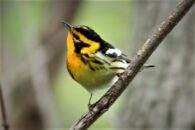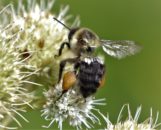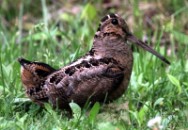The Aurora Sanctuary and State Nature Preserve
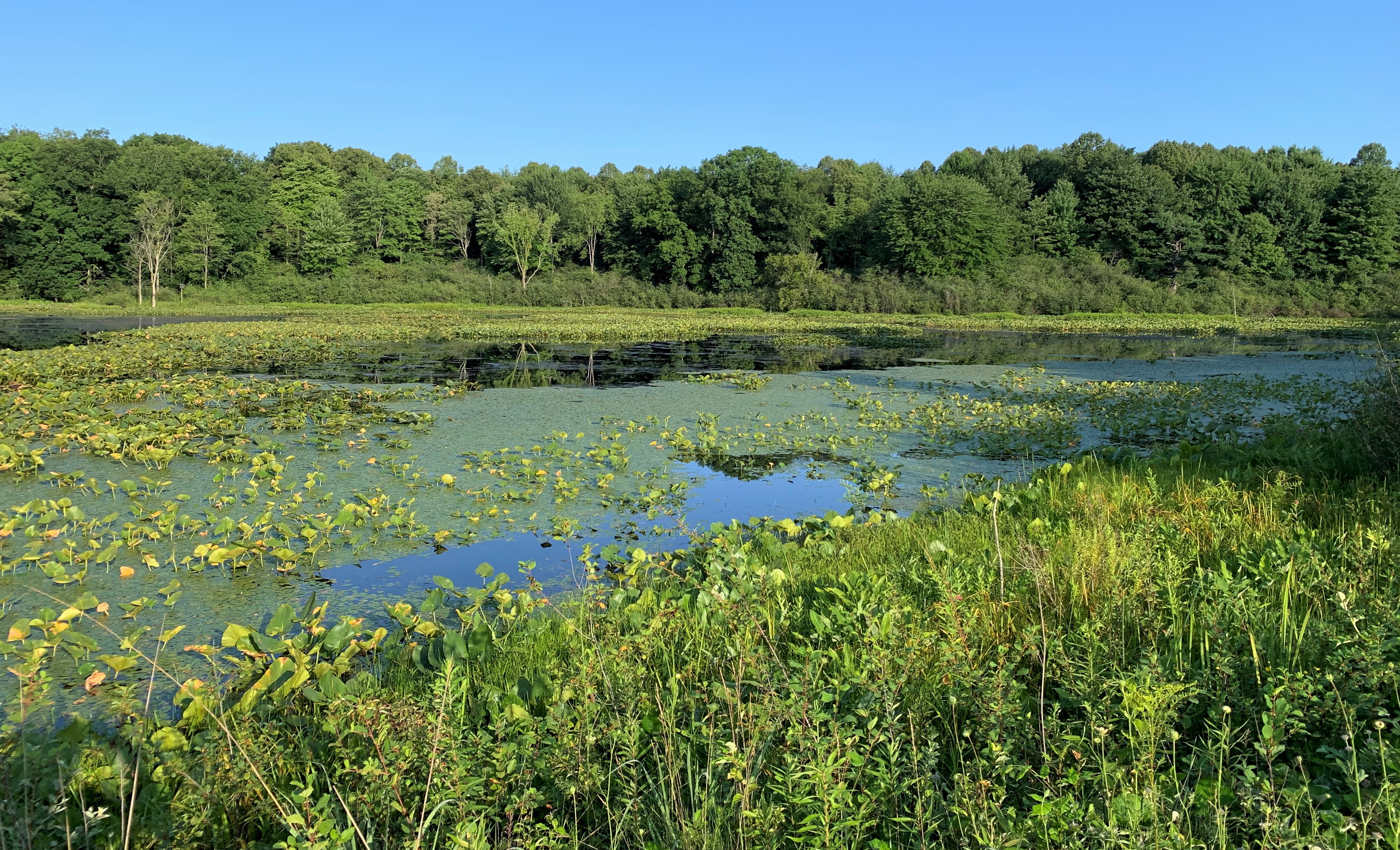
Fulton Pond
The Audubon Society of Greater Cleveland’s Aurora Sanctuary is located north of Pioneer Trail a few hundred yards east of Page Road in Portage County, Aurora, Ohio (Aurora location map). It was purchased in 1941 by our predecessor organization The Cleveland Bird Club. It is thought to be the oldest bird sanctuary in Ohio. The former owner of the property, the Smythe family, intended to develop it in the 1920’s, but the economic depression forced abandonment of the plan. The Cleveland Bird Club subsequently bought the property from the Cleveland Trust Co.

Fringed Gentian
Biological Assets: The bulk of the 165 acre preserve is in second growth beech-maple/oak-hickory forest. Two field areas are preserved from an earlier time when the property was mostly farm and pasture. Approximately half of the property has been left in an entirely natural state, without trails or other man-made alterations of any kind. A trail system on the western portion of the property is about two miles in length and lends access to a large variety of habitat types. The sanctuary is a State Nature Preserve dedicated in 1999 (more information) that is open to the public. A sanctuary map appears below.
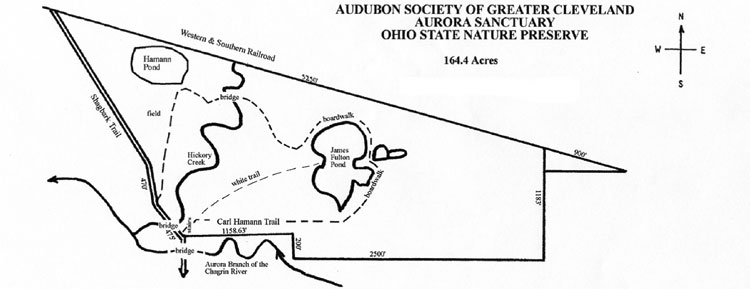
Map of Aurora Sanctuary
To date 185 species of birds have been documented in this sanctuary. The sanctuary is part of National Audubon’s Important Bird Areas (IBA) and has been surveyed for many years with a breeding bird survey preformed each June.
There are four ponds on the property. The largest, Fulton Pond, is currently 10-15 acres in size. An original smaller pond and its tributaries were expanded in the early 1950’s by the addition of a cement dam. It grew further in the 1960’s and ‘70’s as beaver returned to the area and raised the dam. Beaver have also enlarged a small pond/wetland adjoining Fulton Pond on its east side, and this pond is noted for its population of both closed (bottle) gentian and smaller fringed gentian, the latter of which is state listed as an endangered wildflower. A smaller pond at the northwest corner of the preserve, Hamann Pond, is about 3 acres in size and was built by Society members in the early 1950’s. An observation blind overlooking Hamann Pond was constructed in 2003. Again the size of this pond is expanding due to an active beaver lodge. A fourth small pond is entirely natural resulting from water drainage patterns and beaver activity. The beaver have abandoned this pond and it is slowly silting in.
Management problems in the Aurora Sanctuary include protecting its integrity from growing development pressures on neighboring land and dealing with one invasive plant in particular, European buckthorn. Recently the city of Aurora purchased the former Aurora Country Club (which forms the western border of the sanctuary) and is restoring it to its natural state. It will be interesting to see how this change in land use affects the Aurora Sanctuary’s wildlife.
Due to its many habitat types and the historical interest in this sanctuary, it clearly has great potential as an educational resource for students of natural history and human history alike.

